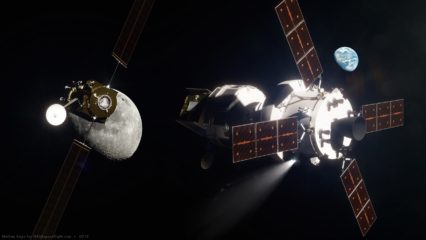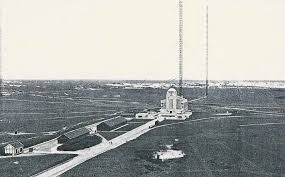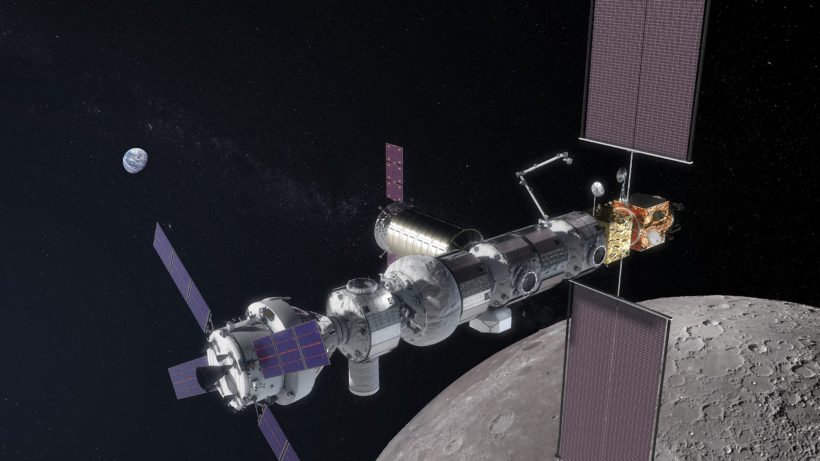De Lunar Orbital Platform-Gateway (LOP-G), ook wel Lunar Gateway is een internationaal project geleid door NASA. Het project stelt een ruimtestation voor dat in een baan rond de maan zal worden gebracht. Het ruimtestation zal communicatie vanaf de maan onderhouden met de Aarde. In een later stadium zal er ook een laboratorium en vetrekken voor een kortstondig verblijf aan het ruimtestation worden gekoppeld, tevens zal het station ook ruimte gaan bieden aan robots en rovers. Het ruimtestation zal van energie worden voorzien doormiddel van zonne-energie.
In de Gateway zal onderzoek worden verricht naar planeten, astrofysica, aardobservaties, heliofysica, fundamentele ruimte biologie en het menselijk welzijn. De Gateway zal worden ontwikkeld, onderhouden en gebruikt in samenwerking met commerciële ruimtevaartbedrijven en andere internationale partners van NASA. De Gateway is een eerste stap in het mogelijk maken van langdurige missies naar het oppervlak van de maan, en maakt dan ook deel uit van het Artemisprogramma van NASA. Ook zal Lunar Gateway gebruik gemaakt kunnen worden door NASA’s voorgestelde Deep Space Transport, waarbij in 300-400 dagen een reis naar Mars gemaakt kan worden. Deep Space Transport maakt gebruik van herbruikbare ruimteschepen, zoals Orion, deze schepen zullen worden aangedreven met elektriciteit en chemische reacties. Zie onderstaand origineel bericht.
NASA updates Lunar Gateway plans

NASA management updated the agency’s human exploration plans for the 2020s to the NASA Advisory Council’s (NAC) Human Exploration and Operations (HEO) Committee last month at the Ames Research Center in California. The focus of the evolving plans for the next decade is launch, assembly, and operations of a human-tended space station in high lunar orbit.
Separate modules of the lunar gateway are planned to be launched to the Moon beginning in 2022, and NASA provided the latest look at the pieces and a forecast of their launch schedule. A commitment of funding for the gateway project is still forthcoming, but the Power and Propulsion Element (PPE) is the module that would launch first.
NASA plans to award contracts to one or more of the commercial bidders early next year to build, launch, and demonstrate an electric propulsion spacecraft that meets requirements for a Gateway PPE. After a one-year demonstration period, NASA would then exercise a contract option to take over control of the spacecraft.
New name, new modules
Now just referred to as “The Gateway,” the spacecraft formerly known as the “Deep Space Gateway” and referred to in this year’s budget request as the “Lunar Orbital Platform – Gateway” (LOP-G) is planned to orbit high above the poles of the Moon in support of crew visits and science experiments. The plan briefed to the HEO committee last week updated earlier initial looks at the Gateway’s specifications.
When assembled, the lunar outpost would support Orion missions of between one and three months from launch to splashdown. Month-long missions could be supported initially and that is being looked at now for the first crew visit on Orion to dock to the PPE on Exploration Mission-3 (EM-3).
“Our very first flight to the Gateway we expect to have an expedition length of about 30 days from launch to landing,” Jason Crusan, Advanced Exploration Systems Director and Gateway Formulation Lead for NASA, said. “We have a twenty-some day capacity on Orion [and] we have the ability to be on Gateway.”
“As we get into the mission design we’ll figure out the total length, but we’ll have the full duration Orion plus anywhere from six to thirteen days on the actual Gateway on the very first mission.”










